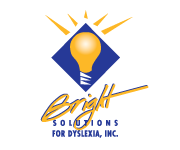What is Dyslexia
Fact vs. Myth
MYTH: He can’t have dyslexia because he can read. FACT: All children with dyslexia can read—up to a point. But auditory processing problems prevent them from hearing all the individual sounds in a word. So they don’t read by sounding out. Instead, they use alternative strategies: context clues (pictures and a predictable or familiar story), the shapes of words, and guessing based on the first letter or two. But their memories can hold only a limited number of words. So these strategies will fail them by third or fourth grade. Without the right type of help, they can not progress any further—no matter how smart they are and how hard they try. Such reading failure is preventable – if they are taught to read differently – using the Barton Reading & Spelling System. It teaches children and adults with dyslexia to read and spell at the mid-ninth grade level. That’s considered adult reading level in our society. A ninth-grade-level reader can pass the GED, and go to college. | MYTH: She can’t have dyslexia. The school tested her, and she didn’t qualify for special education. FACT: Schools test only for “Learning Disabilities,” not for dyslexia. Only the most severely dyslexic children meet the criteria for a Learning Disability, or LD, and get help through the Special Education system. According to NIH research, 80 percent of children with a Learning Disability actually have dyslexia. Dyslexia is by far the most common learning disability. But only one in ten children with dyslexia qualifies for special education services. Dyslexic children who do NOT qualify just “fall through the cracks.” They’re in the regular classroom, struggling far more than they should, and they’re at extremely high risk for dropping out of school later. |
